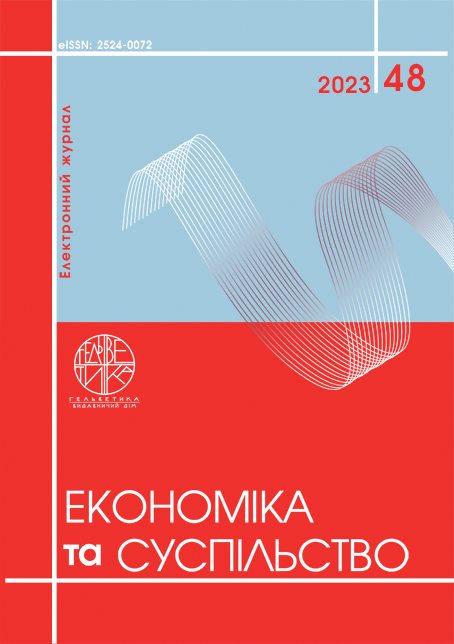INNOVATIVE ASPECTS OF THE ORGANIZATION OF ACCOUNTING OF LAND USE OPERATIONS OF AGRICULTURAL ENTERPRISES
Abstract
The article examines current issues of land use management and legal acts of accounting for land use operations of agrarian enterprises, defines subjects of land leases, forms of rent, components of a land lease agreement and shortcomings in registration and registration, display of land leases in accounting. It is accepted to pay attention to the issue that reflects land resources as one of the most valuable wealth of mankind. It has been proven that they ensure the functioning of any agricultural production and living conditions of people, and also act as a territorial basis for the placement of other natural resources and characterize the statement that the prosperity of the current generation and the fate of the future depends on how land resources are currently used in Ukraine, which are the main productive force of our society. Attention is paid to the problems that arise in practice between the subjects of lease relations and land use of agricultural enterprises. Recommendations for improving the standard lease agreement are offered, and aspects of land lease accounting by agricultural enterprises are highlighted. The problems and prospects for their solution in land use management, their importance for accounting at agricultural enterprises are detailed. It was noted that the quantitative and qualitative balance of land, human and material resources determines the potential level of efficiency of the agro-industrial sector. It has been proven that a comprehensive assessment of land resources can be fruitful and successful only if the object of assessment is determined in advance. According to the structure of land use, it is possible to state the share of agricultural land in the total structure of the farm's land. Considering the fact that land is the most important means of agricultural production, the structure of land resources is considered in detail. The problems of the procedure for drawing up and registering land use contracts, payment of rent in monetary terms and in kind, renewal of contracts in case of replacement of one of the parties, display of the object of land use lease in regulatory and legal documents are detailed. Innovative approaches to the accounting of land use operations of agricultural enterprises were studied.
References
Андрейцев В.І. Об'єкти земельних правовідносин за новим Земельним кодексом. Науково-практичні коментарі. 2012. № 2. С. 14.
Михасюк Р.І. Регулювання земельних відносин. Львів : Укр. технології, 2012. 248 с.
Poliatykina L.I. Rationale and trends of development of small business enterprises in Ukraine. Economic and law paradigm of modern society. 2018. № 2. pp. 31–39.
Світличний О.П. Раціональне використання та охорона земельних ресурсів: поняття і зміст. Землеустрій і кадастр. 2011. № 1. С. 23–25
Третяк А.М., Дорош О.С. Управління земельними ресурсами. Навч. посібник. Вінниця : Нова Книга, 2006.– 360 с.
Хомюк Н.Л. Сутність та раціональне використання земельних ресурсів. Інноваційна економіка. 2013. № 5. С. 143–145.
Andreytsev V.I. (2012) Obiekty zemelnykh pravovidnosyn za novym Zemelnym kodeksom [Objects of land relations under the new Land Code]. Naukovo-praktychni komentari, no. 2, pp. 14. (in Ukrainian)
Mikhasyuk R.I. (2012) Rehuliuvannia zemelnykh vidnosyn [Regulation of land relations]. Lviv: Ukr. Technology. (in Ukrainian)
Poliatykina L.I. (2018) Rationale and trends of development of small business enterprises in Ukraine. Economic and law paradigm of modern society, no. 2, pp. 31–39.
Svitlichny O.P. (2011) Ratsionalne vykorystannia ta okhorona zemelnykh resursiv: poniattia i zmist [Rational use and protection of land resources: concept and content]. Zemleustrii i kadastr, no. 1, pp. 23–25. (in Ukrainian)
Tretyak A.M., Dorosh O.S. (2006) Upravlinnia zemelnymy resursamy [Land management]. Vinnytsia: New Book. (in Ukrainian)
Khomyuk N.L. (2013) Sutnist ta ratsionalne vykorystannia zemelnykh resursiv [The essence and rational use of land resources]. Innovative economy, no. 5, pp. 143–145. (in Ukrainian)


